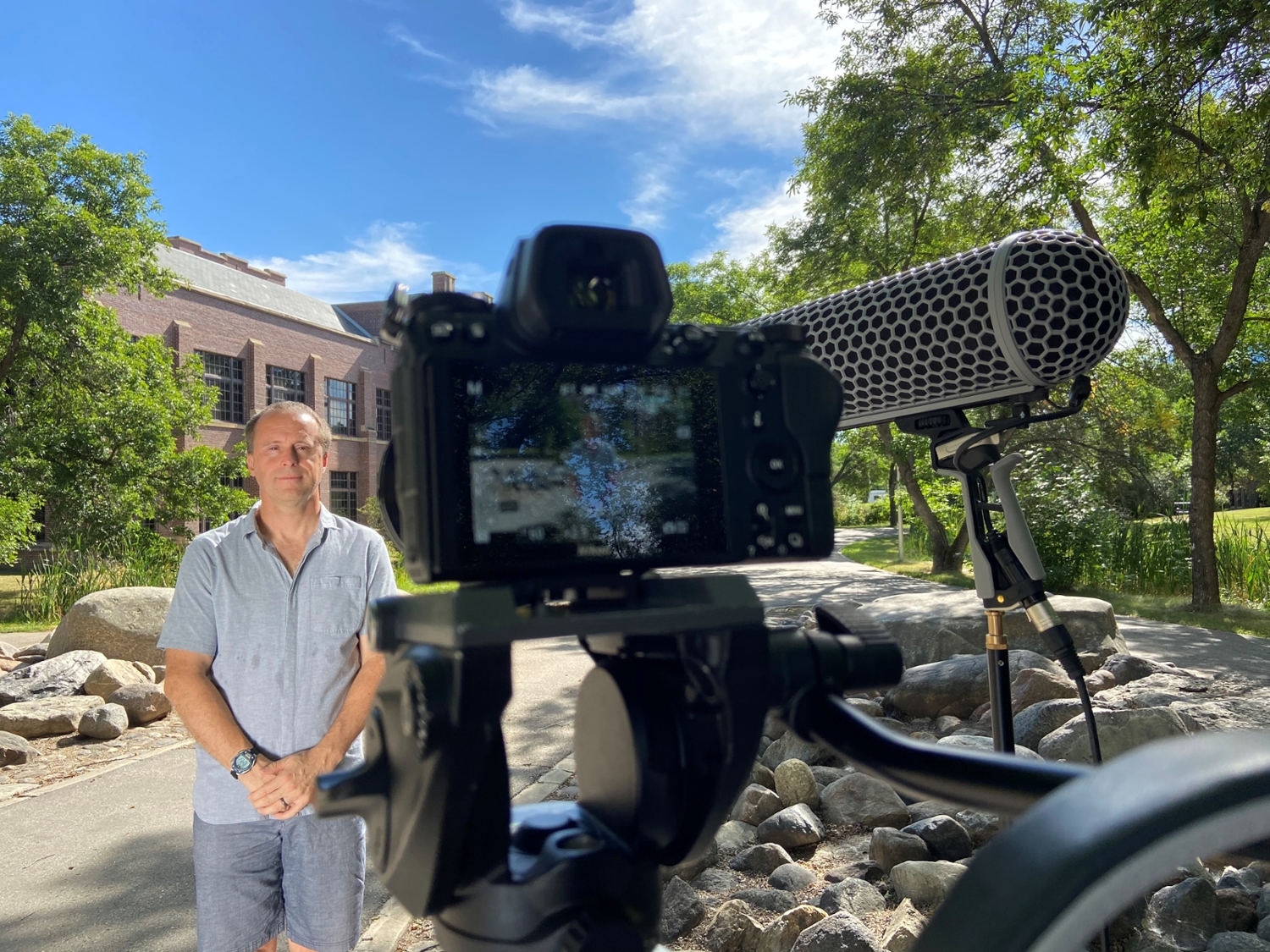
New first-year engineering program is 'RE-ENGINEERED' for student success
The new-look first year launches in fall 2021.
By Donella HoffmanThe University of Saskatchewan (USask) College of Engineering is seeking to create the most effective first-year engineering program in Canada. Dubbed "RE-ENGINEERED," it will welcome its first students in fall 2021.
When that happens, it will mark the end of a process that began in 2016.
"We asked ourselves, 'What if we started from a blank piece of paper? How would we do it?' " said Associate Professor Dr. Sean Maw (PhD), one of the leaders of the team transforming USask Engineering's first-year program.
Today's engineering grads need a more robust and diverse skill set than ever before. But for the most part, engineering education hasn’t fundamentally changed in 100 years or longer, according to Maw, the Jerry G. Huff Chair in Innovative Teaching, and a faculty member of the Graham School of Professional Development in the USask College of Engineering.
The team looked at curriculum and also focused on better supporting students' mental and physical health, while keeping them excited about engineering and giving them a solid foundation for upper-years courses. As they built the program, designers were informed by extensive consultation with faculty and students, as well as research on effective instruction, principles for teaching and learning in higher education, and practices that support student success.
The RE-ENGINEERED curriculum was made possible by Ron and Jane Graham, whose generous donation allowed the hiring of a new team of engineering education specialists to develop the curriculum. As the program is implemented, many alumni continue to support equipment and software costs through gifts to the Engineering Advancement Trust.
RE-ENGINEERED means a restructured student schedule
While engineering students currently have five or six courses that run the length of the semester, RE-ENGINEERED classes will vary in length and intensity, with material sequenced so when students learn knowledge in one course they can immediately apply it in another. "Think of TV shows that have crossovers. It’s going to be like that with the courses," said Maw.
"We will also be pacing things better," he added, noting that the team of first-year instructors will communicate regularly and co-ordinate assessments so students won't have one jam-packed week followed by another in which they have nothing due.
First-years will also have a consistent schedule with a common lunch hour so it will be easier for them to schedule community-building extra-curriculars and social events, or simply fit in a workout. "This predictability is good for mature students, people who are working in the evening and for those who have a family," said Maw.
. . . and a revitalized curriculum
The first difference is the addition of online Summer Top Up courses, so students can identify and address any gaps from their high school classes – including chemistry, math and physics – before starting first-year. In fact, the college rolled out Summer Top Ups this August, a year earlier than planned, because in-person learning ended so abruptly for Grade 12 students.
Thanks to the inclusion of shorter courses in RE-ENGINEERED, a broader range of material will be covered, making students more employable after their first year. For example, content covered in students' first semester, in addition to basics like mechanics and electrical circuits, will include:
• Introduction to the profession and communication
• Calculus; linear algebra . . . applied to engineering problems
• Short courses in chemistry, biology, physics and geology and how they relate to engineering
• Indigenous cultural foundation
• Design; drawing and sketching; computer-aided design
• Computer programming (Python and Matlab)
• One-day labs introducing students to each of the engineering disciplines
Refocused to build a stronger foundation
Students won't find the work easier, said Maw, but the environment will be more supportive. Although there are no final exam periods, students will be tested on modules of content throughout their courses using competency-based assessment, something pretty new for Canadian engineering education. The final exam periods in December and April will be used for discipline-specific, hands-on learning.
The idea is to ensure students have a stronger foundation in the basics they'll need for the rest of their degree. For instance, they will need to achieve a mark of at least 70 per cent on material involving facts, concepts, basic computations, and procedural steps, as well as basic integrative problems in the course. There will be no minimum standard for the very advanced material. "They have to do pretty well on the foundational material. If they don’t do well on an early test of a learning outcome, they will get a second or third chance to do better," Maw said.
Overall, it will be a more constructive environment for learning.
"We want to minimize the academic attrition by supporting the students better and by co-ordinating what we’re doing across the courses better. It won't be easier, but it will be more supportive and thorough," said Maw.
It will also ensure students have the information they need to determine if they’re making the right career choice.
"If they know what engineering’s about and they know what the related sciences are about earlier, they can make a better decision earlier whether engineering is for them."
The overall goal will be preparing a stronger crop of USask Engineering grads.

